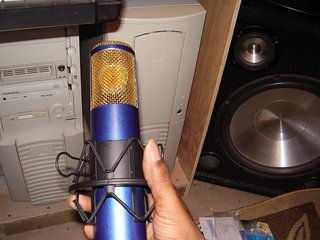I have had a couple of requests for one of my tube mic schemos from time to time, so here we are.
http://www.twin-x.com/groupdiy/albums/userpics/R8.JPG
I used my Nady TCM1050 PSU to power this one, though I modded it to supply 80V and 160V to the capsule. B+ is 200V, but 180V will work just as well.
http://www.twin-x.com/groupdiy/albums/userpics/R8.JPG
I used my Nady TCM1050 PSU to power this one, though I modded it to supply 80V and 160V to the capsule. B+ is 200V, but 180V will work just as well.



